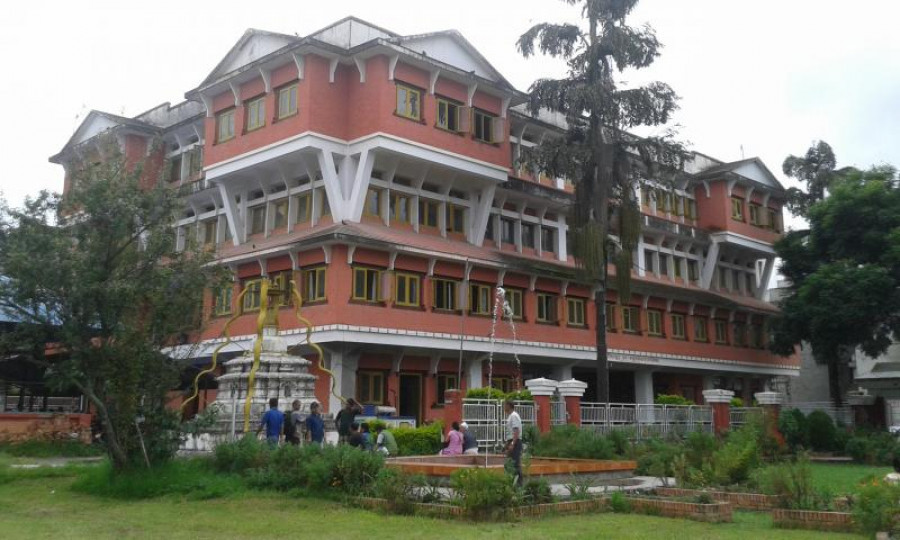Lalitpur
Lalitpur bans smoking in three areas
Patan Durbar Square, Pulchowk and Jawalakhel have been declared smoking-free zones.
Anup Ojha
After Kathmandu Metropolitan City’s numerous failed attempts to ban smoking and tobacco chewing in public places, the Lalitpur Metropolitan City on Friday declared three core areas of Lalitpur as ‘no smoking’ zones effective immediately.
City officials said Patan Durbar Square, Jawalakhel and the periphery of Lalitpur Metropolitan City’s building in Pulchowk have been declared smoking-free areas.
Kathmandu Metropolitan City in March 2019 had announced a similar ban on smoking and tobacco use in public places in all 32 wards of the metropolis. Earlier in 2018, Kathmandu Mayor Bidya Sundar Shakya had announced an 18-month action plan that included a smoking ban to make Kathmandu a healthy city, but neither of the initiatives to discourage smoking in public spaces was successful.
“We are aware of how Kathmandu failed in the drive,” said Sitaram Hachhethu, chief of the implementation division of Lalitpur Metropolitan City. “Kathmandu City relied only on Nepal Police to implement the action plan but the monitoring was lax. This time we are not going to depend only on police personnel. We have roped in City Police for this particular campaign.”
As a part of its smoking-free campaign, Lalitpur City has printed 60 flex boards with different messages to discourage smoking in public. The City has installed the message boards at Patan Durbar Square area, Pulchowk and Jawalakhel in the first phase of its campaign.
Mayor Chiri Babu Maharjan, who inaugurated the campaign in the presence of public health practitioners, country’s sportspersons, Nepal Scout members, police and local residents at Patan Durbar Square on Friday said the City had planned to initiate the campaign two years ago but the Covid-19 pandemic caused delays.
Dilli Sher KC, public health officer at Lalitpur Metropolitan City, said the City’s main focus is to make people aware of the risks of smoking and the adverse effect smoking in public spaces has on second-hand smokers.
“I don’t know how long this campaign will last. But as long as Mayor Maharjan is in office, the ‘no smoking’ drive will be implemented effectively,” said KC.
If the drive becomes successful in the specified areas, the Lalitpur Metropolitan City will be expanding the non-smoking campaign to other public areas of Lalitpur district, he added.
According to Hachhethu, during the first week of the campaign, the City police will request the public to not smoke in prohibited areas but after a week’s time, they will impose fines on those who do not follow the public regulation. “The City police will approach those who smoke in prohibited areas with a request to not smoke there. This is being done in order to raise awareness among the public about the new restrictions in designated spaces. One week into the campaign, smokers who light up in these areas will be fined. This is not a time-designated campaign and will be in effect on a long-term basis,” said Hachhethu.
The Tobacco Product (Control and Regulatory) Act-2011 bars smoking in public places, but the Act remains largely unimplemented.
According to the law, anyone smoking in public spaces is liable to a fine of Rs100 to Rs100,000.
Back in 2016, when the Metropolitan Police Range Kathmandu had stepped up action against anyone smoking in public places, it had detained more than 600 rule breakers in a week. They were fined Rs100 each but the campaign soon fizzled out.
Lalitpur Mayor Maharjan, however, believes the latest smoke-free drive will be sustainable and successful. “I have also talked to the federal government about our initiative. We have a dedicated team at City Police to ensure the drive is effective this time,” said Maharjan. “What we are doing right now is nothing new. We are just implementing the law. We will gradually expand this drive to other places. The fines collected from smokers will be used for the treatment of cancer patients.”
The Kathmandu Metropolitan City in the 2019 ‘no smoking’ drive had received Rs10 million in assistance from the World Health Organization’s Tobacco Free Initiative. However, the latest smoke-free drive has been initiated at a minimum cost with no overhead costs, said Maharjan.
“This is not an expensive campaign. We initiated this with minimum cost to discourage smoking. Young people are seen smoking in heritage sites and we want them to know the risks they are putting themselves and others in by smoking in public spaces,” said Maharjan. “Our motive behind the campaign is also to make our city healthy for all.”
The World Health Organisation’s report that was published in July 2021 states that each year more than 7 million people die as a result of direct tobacco use while around 1.2 million deaths are the result of non-smokers being exposed to second-hand smoke.
A report published by Nepal Development Research Institute, an independent, non-profit institution–‘Tobacco in Nepal: the current context: 2019-2021’ states that more than 27,000 Nepalis die due to tobacco-induced diseases every year. The institute further states that among the major risk factors for deaths in Nepal, 13 percent of deaths in 2017 was attributed to smoking.




 18.37°C Kathmandu
18.37°C Kathmandu.jpg)








